The Omiya Bonsai Museum’s garden area features a rotating selection of 40-50 trees from the museum’s collection.
Many of these trees originally belonged to the Takagi Bonsai Museum. Over time, the collection has grown to become one of the more impressive bonsai gardens in Japan.

The museum garden
The garden is best appreciated from the upstairs terrace of the main building.

The garden from above
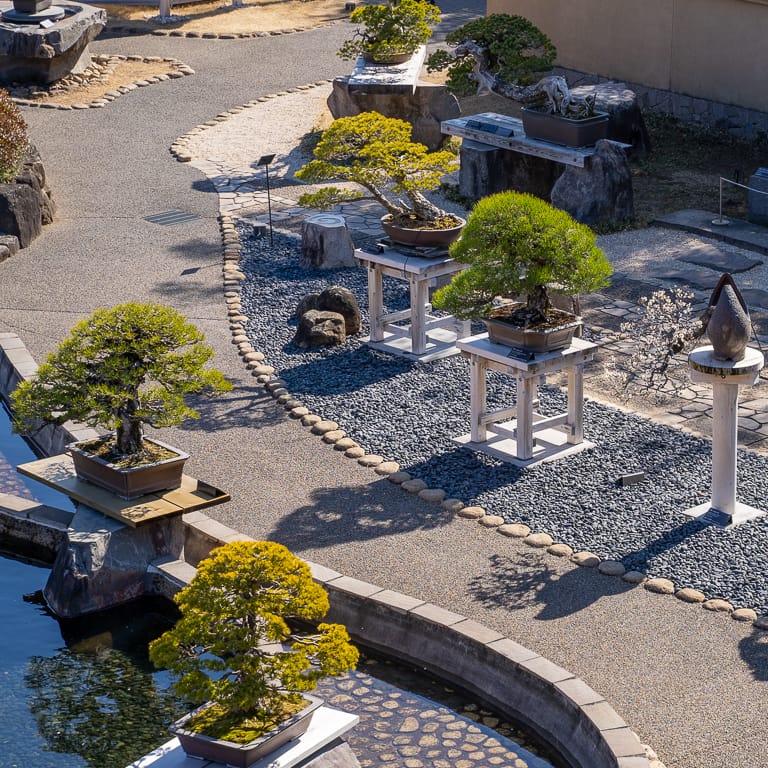
Tree-lined path
The trees, however, are best appreciated up close. Here’s a selection of the bonsai on display the day I visited.
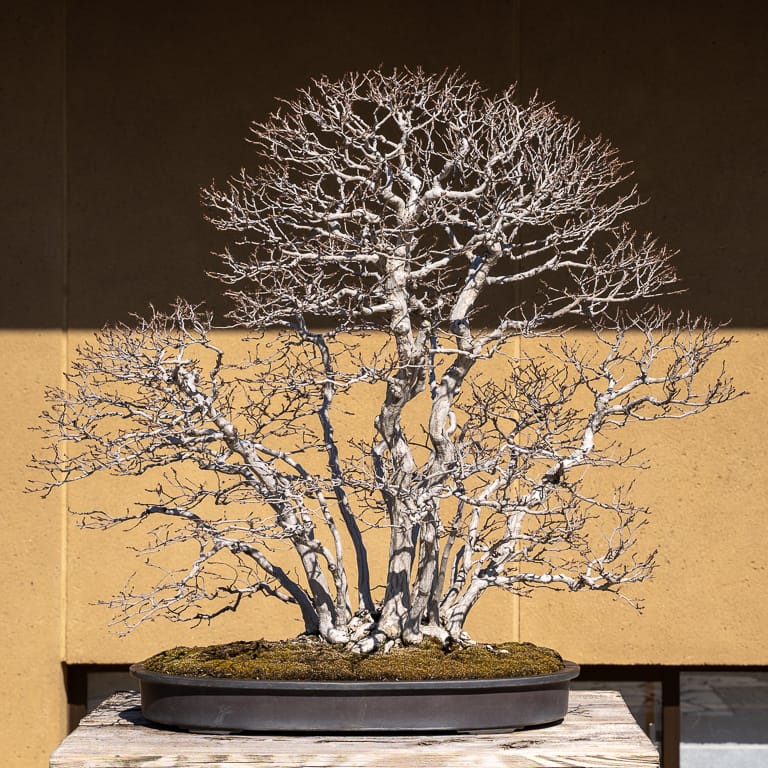
Korean hornbeam – 60 years old
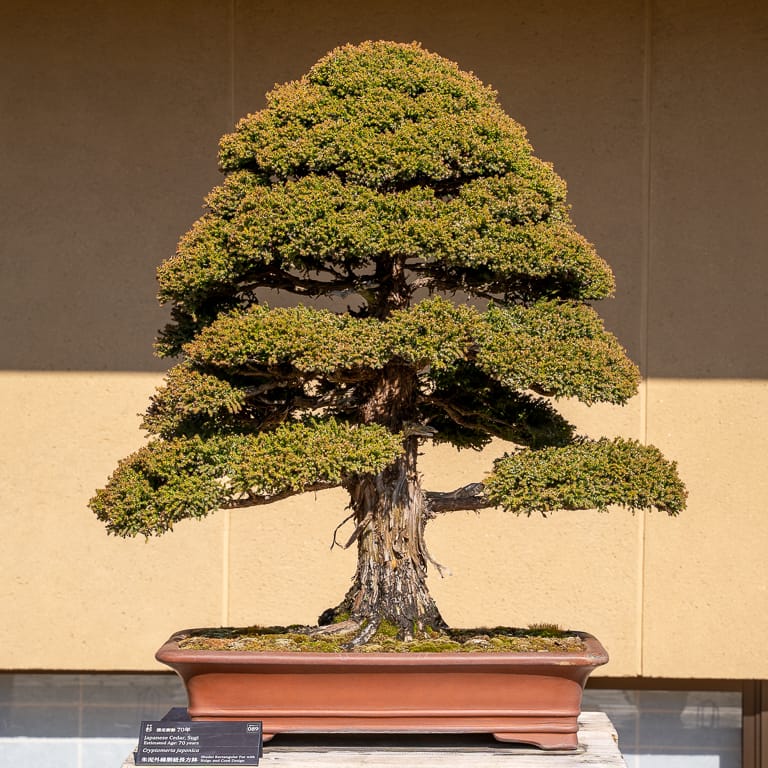
Cryptomeria – 70 years old
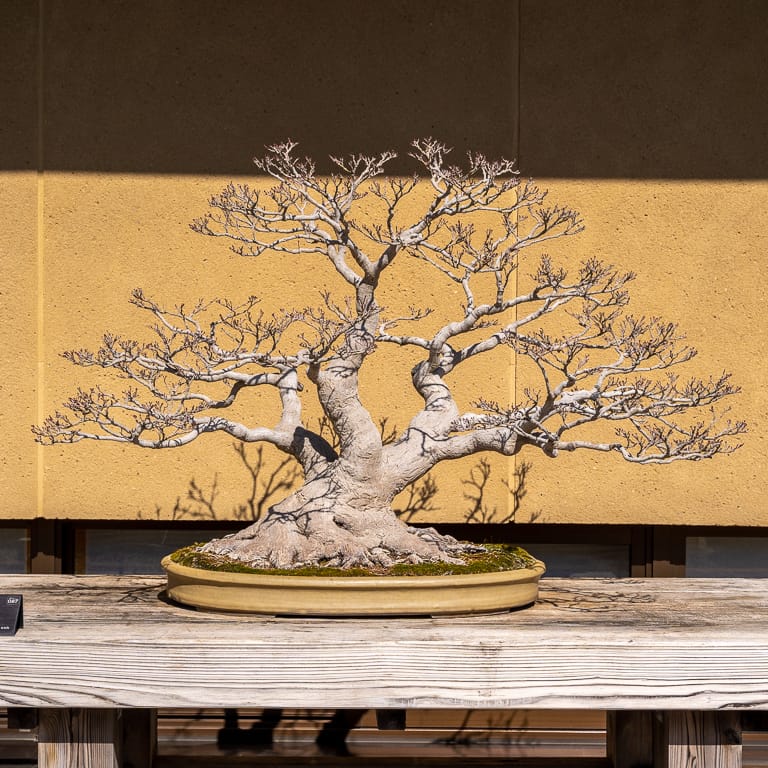
“Koryo” – Japanese maple ‘Shishigashira’, 120 years old
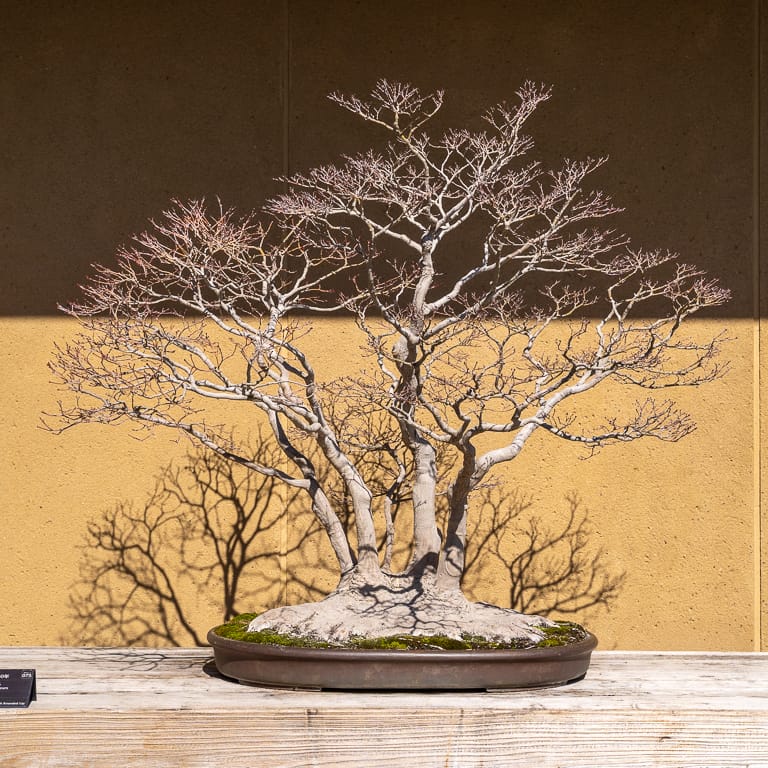
“Koga” – Japanese maple, 150 years old
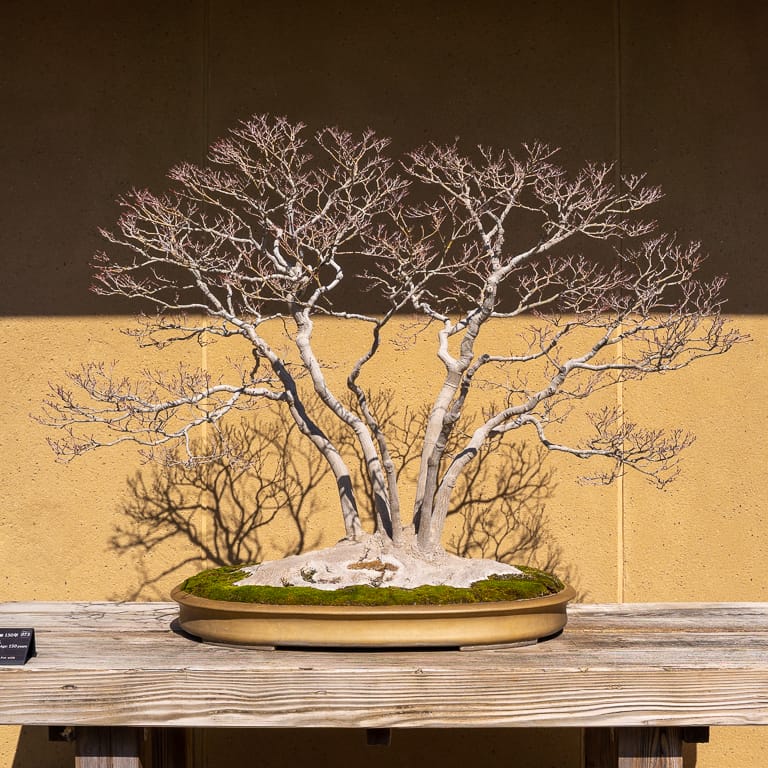
“Musashi ga oka” – Japanese maple, 150 years old
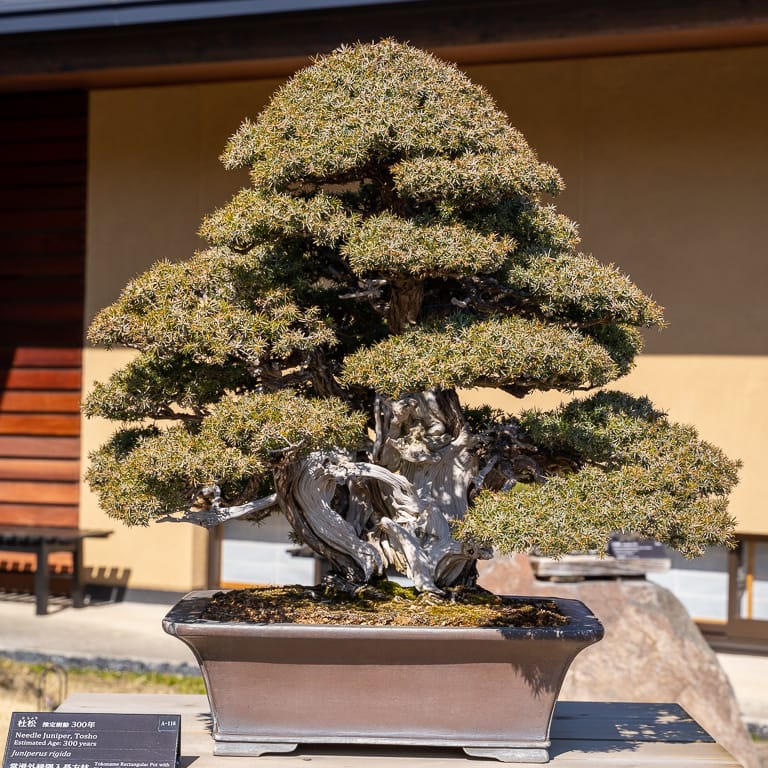
Needle juniper – 300 years old
On the day I visited, preparations were being made to host a beginner’s workshop. The museum provides trees, pots, soil, and tools for participants who take home the trees when they’re finished.

Visit the Omiya Bonsai Museum website to learn more about their programs and special exhibits.
Note: Special thanks to Gomi Takanari san, Senior Clerk, and Ishida Rumiko san, Curator, for inviting me to photograph the Yamada exhibit and bonsai garden. Gomi san and Ishida san were wonderful hosts who made this my favorite visit to the museum to date. Thank you both!
Online Consultations Available!
Have questions about your trees? Schedule an online appointment to discuss strategies for improving your bonsai. Learn more about Bonsai Tonight’s Video Consulting.
Subscribe to Bonsai Tonight
New Posts Delivered Every Tuesday and Friday
scott chadd says
the museum is in a part of town with lots of bonsai nurseries selling their materials. one of the things that always fascinated me is the way the bonsai “business” works in Japan. at the bottom of the supply chain are the bonsai nurseries out in the countryside who provide the rough ‘field grown’ stock material to intermediaries/brokers who then purchase them from the farmer and sell them on to bonsai gardens closer to the city. as the bonsai move from rural to urban the design is improved and the value goes up.
Jonas Dupuich says
It’s a cool system – would love it if we could do something like that here!
Alessandro says
Ciao Jonas! Great post as usual!
How can we bring in our homes a bonsai that we bought in Japan? It’s an easy task? Is there some advice that we can learn from you?
Thank you very much!
Alessandro
Jonas Dupuich says
Hi Alessandro! The best way to bring trees from Japan home is to go through your local agricultural department. In the US, permits and quarantines are required.